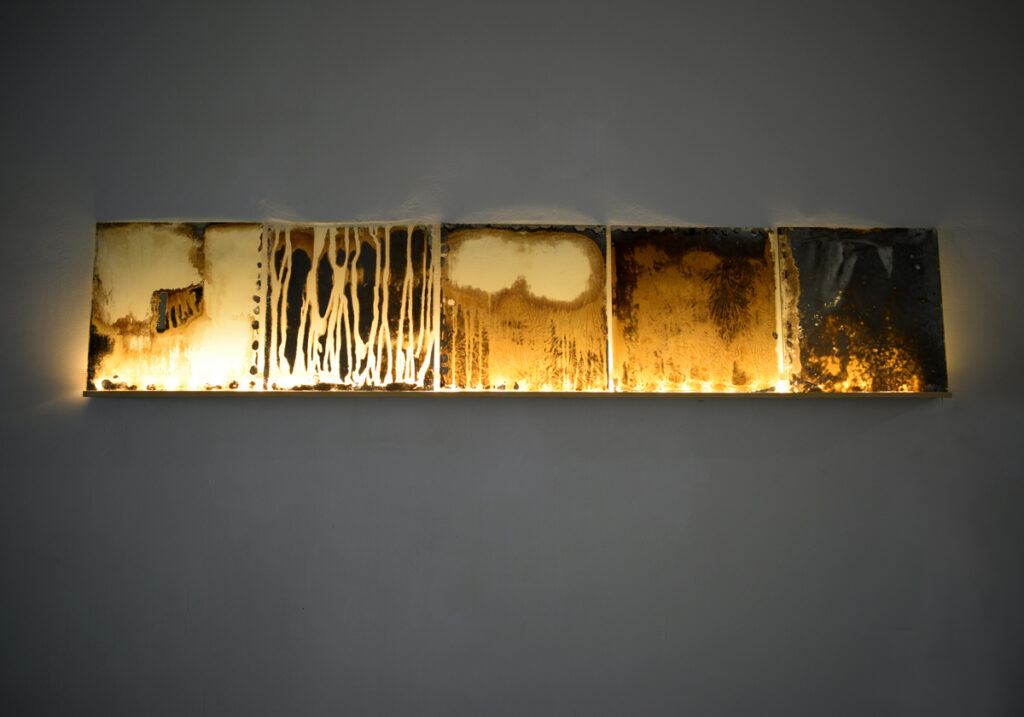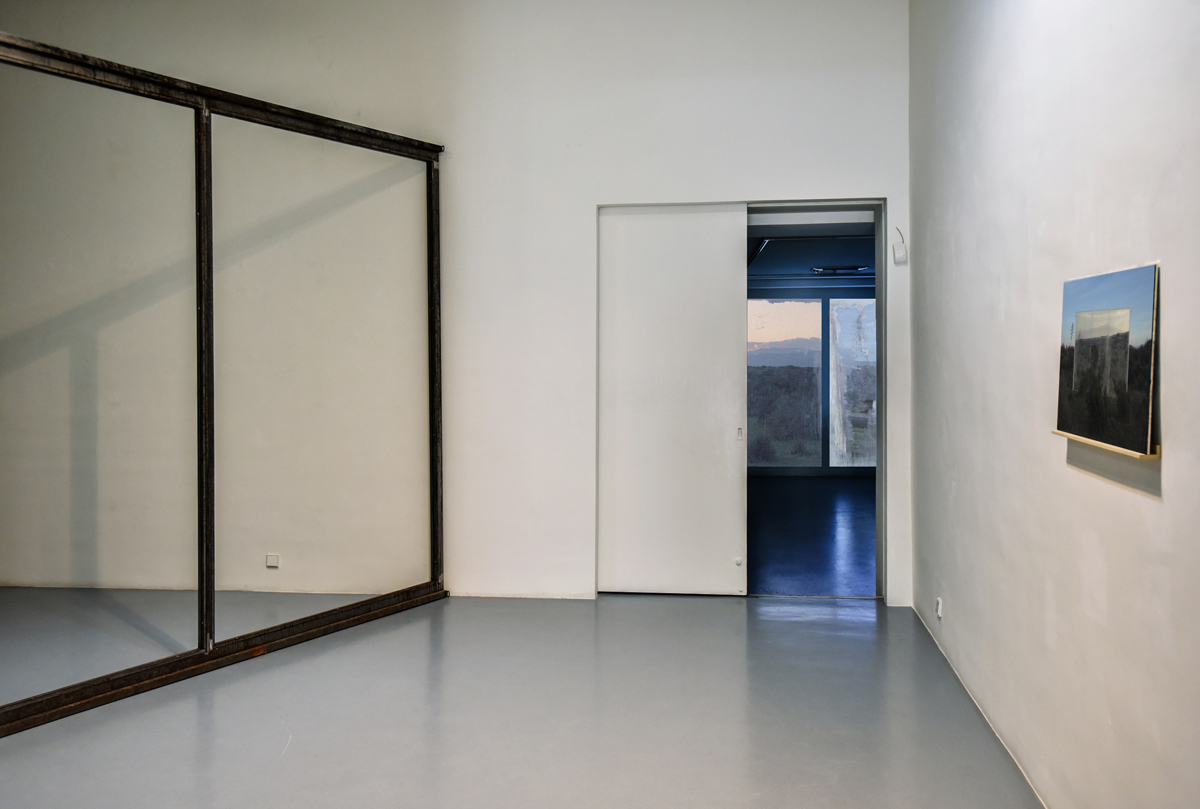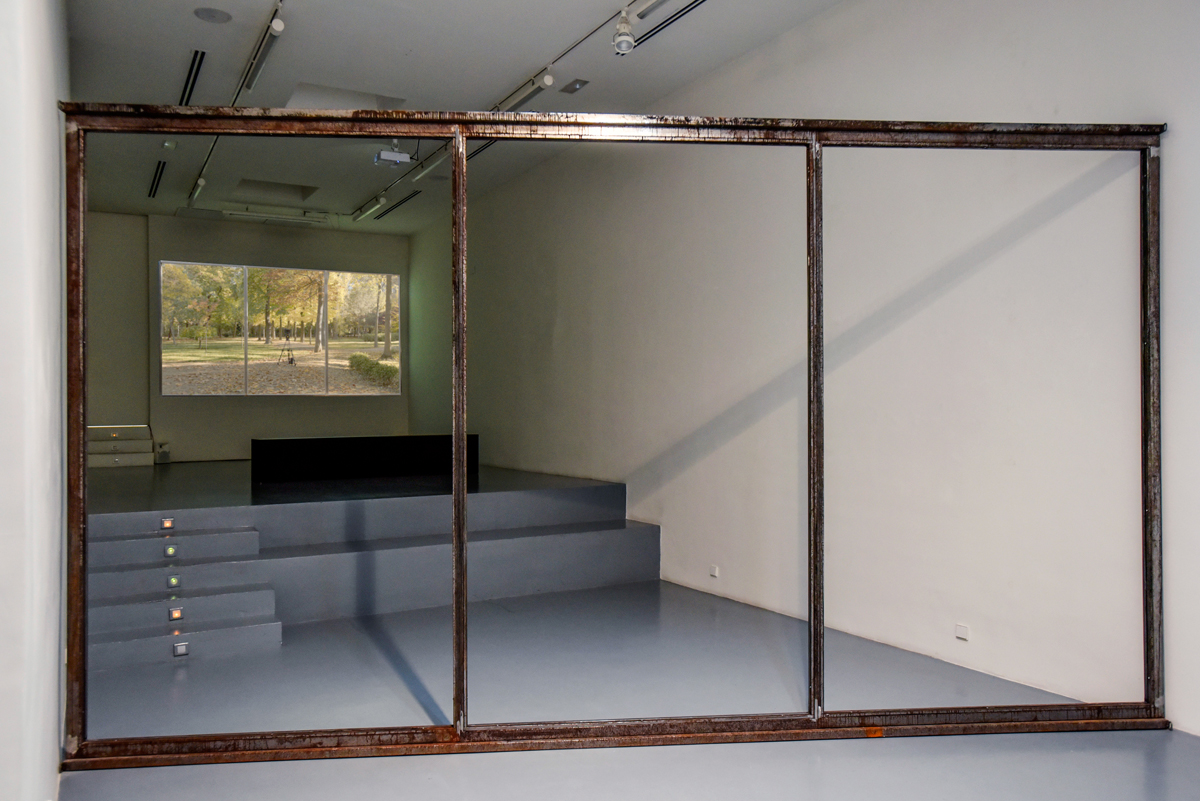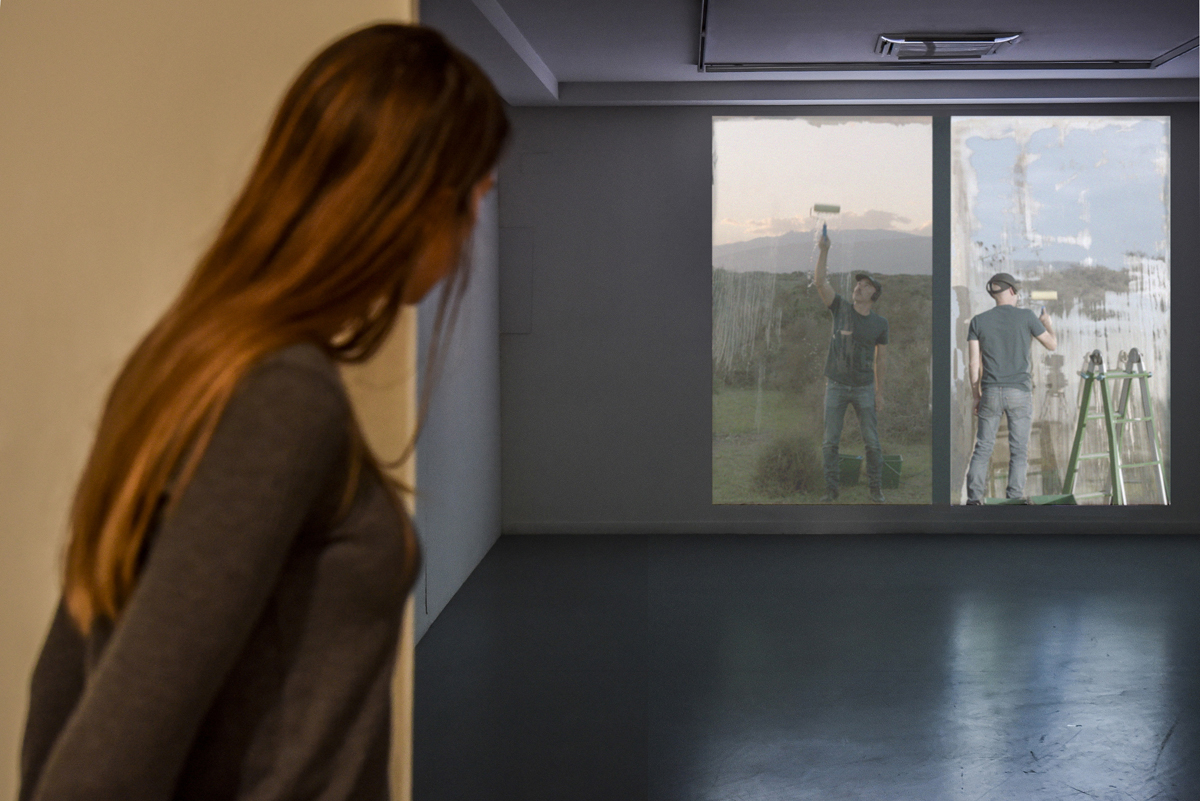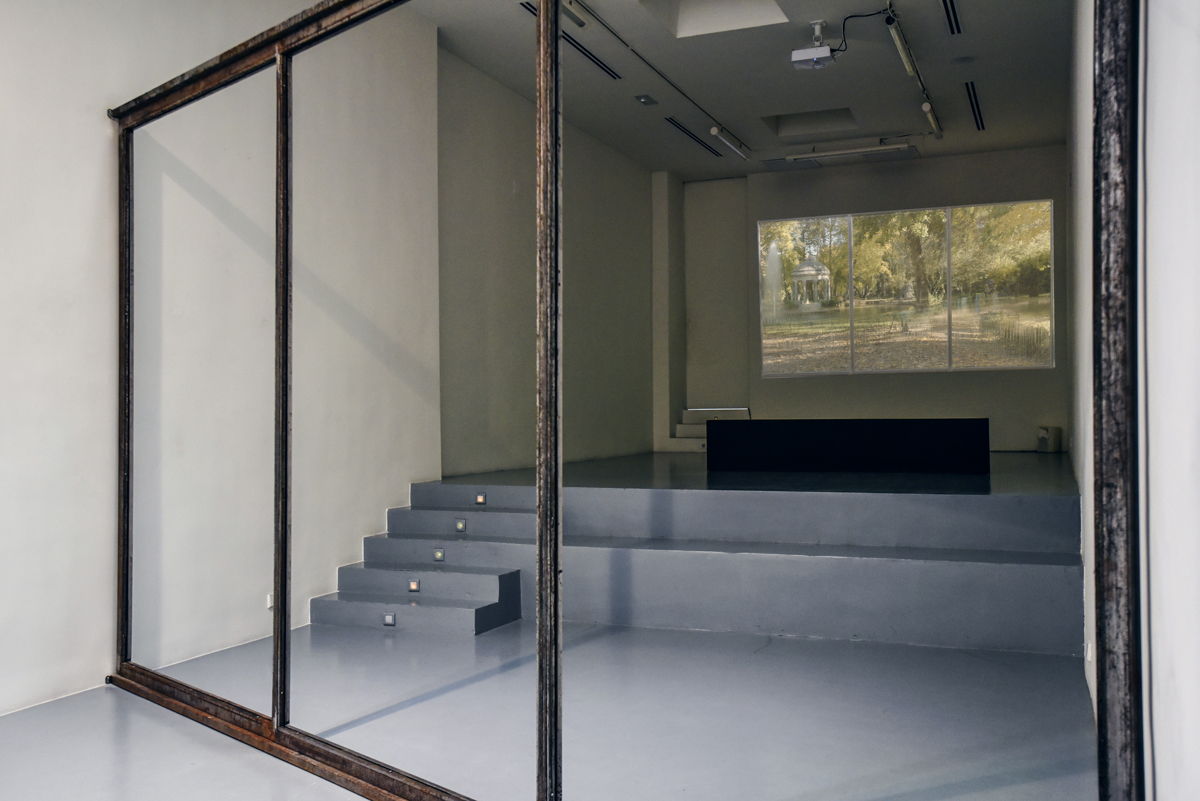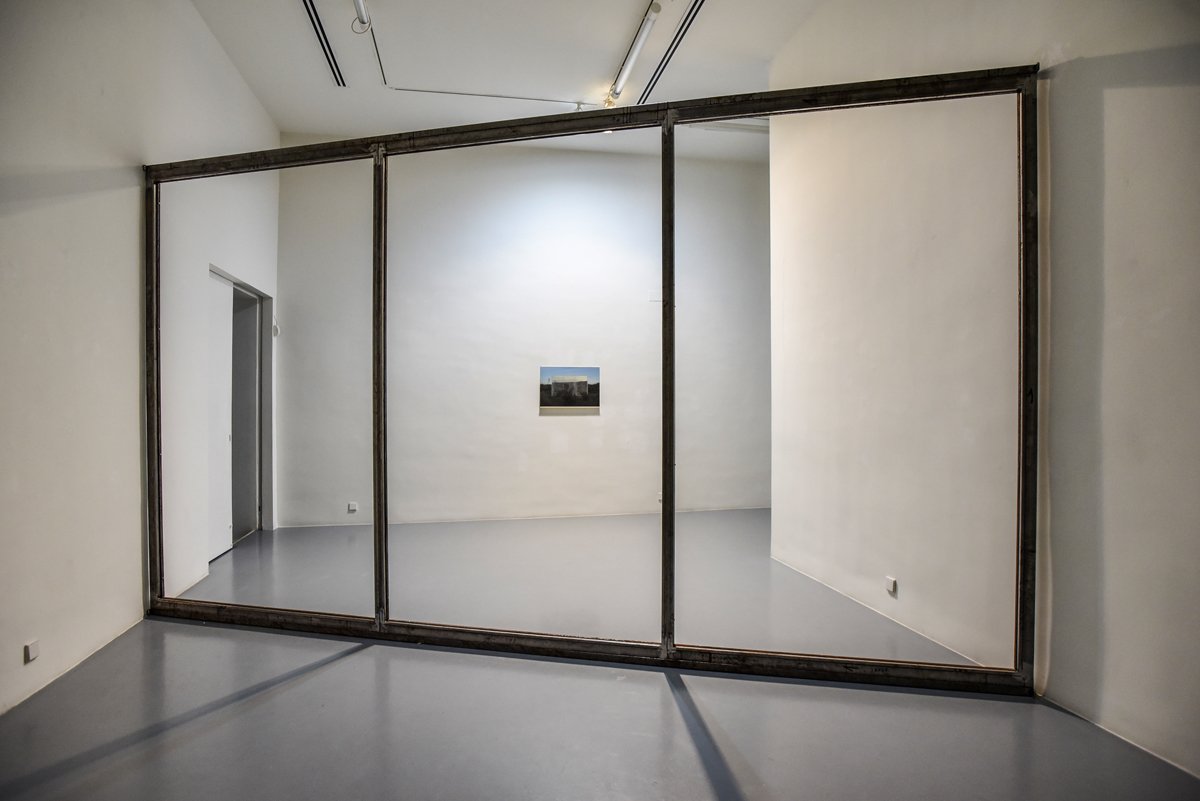
Gemini. Galería Ángeles Baños. Badajoz 2017
La pantalla como superficie residual, y como referente de nuestro imaginario visual, ha sido un tema recurrente en mis trabajos, al igual que el paisaje como espejo de nosotros mismos, nuestra más insondable consciencia. Pero, ¿Somos realmente críticos y conscientes de la realidad que nos rodea y se nos muestra, o simplemente permanecemos hipnotizados ante esos reflejos, ante esas imágenes que consumimos compulsivamente y alrededor de las cuales navegan nuestros pensamientos?.
A lo largo de mi trayectoria he reflexionado sobre el paisaje desde la abstracción, la fantasia, el sueño o la mirada del otro y por primera vez los protagonistas de las videoperformances que se presentan en esta exposición son paisajes reales. Escenarios icónicos cargados de referencias metafóricas: el desierto -territorio inhóstipo y límite donde el horizonte onmiopresente se muestra como medida- y el jardín como expresión de un entorno domesticado, codificado e intelectualizado.
Gemini. Ángeles Baños Gallery. Badajoz 2017
The screen as a residual surface, and as a referent of our visual imaginary, has been a recurring theme in my works, as well as the landscape as a mirror of ourselves, our unfathomable consciousness. However, are we really critical and aware of the reality that surrounds us and shows itself to us, or do we simply remain hypnotized before those reflections, before those images that we consume compulsively and around which our thoughts navigate?
Throughout my career, I has reflected on the landscape from the abstraction, the fantasy, the dream or the gaze of the other; and, for the first time, the protagonists of the video performances presented in this exhibition are real landscapes. Iconic scenes loaded with metaphorical references: the desert -inhospitable territory and limit where the omnipresent horizon is shown as a measure- and the garden as an expression of a domesticated, codified and intellectualized environment.
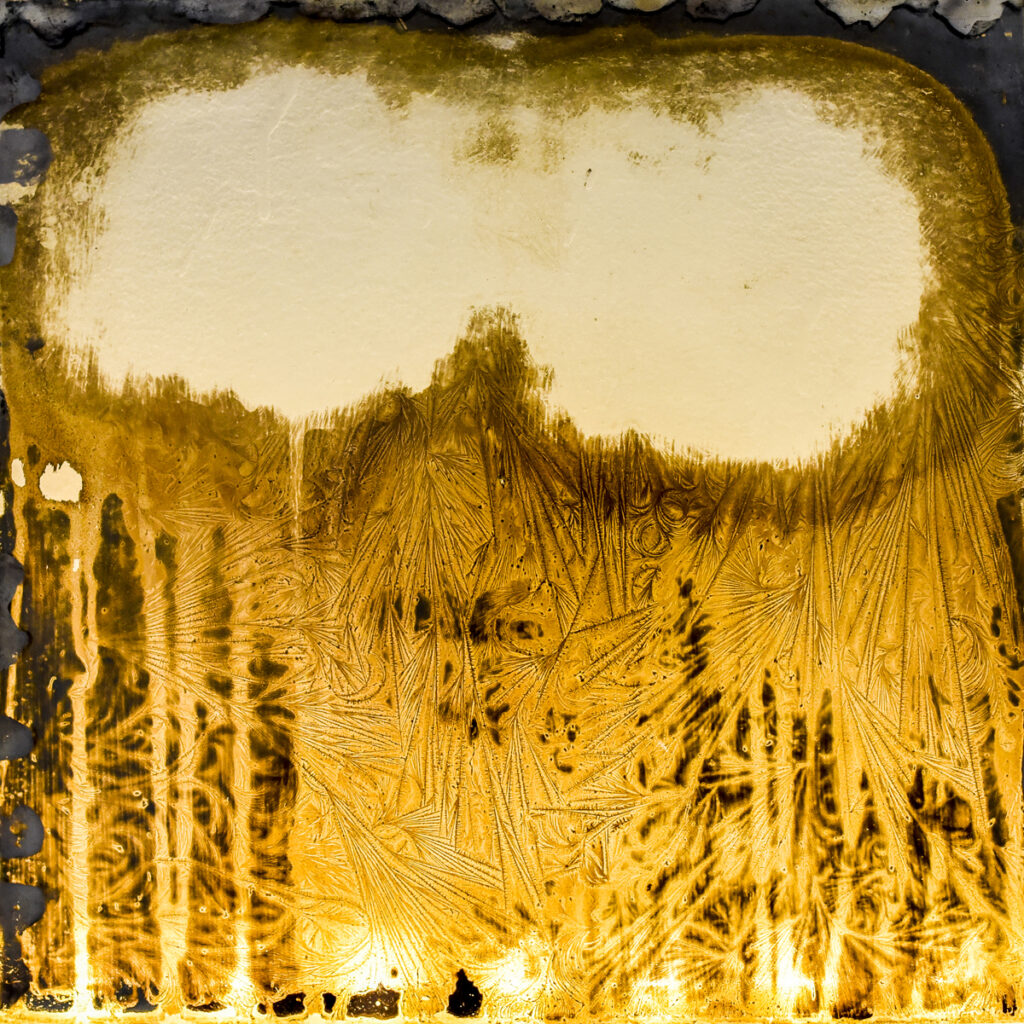
En ambos trabajos, fiel a mi manera, pacientemente y con una actitud distanciada y desprovista de esa carga aurática atribuida tradicionalmente a la figura del artista, ejecuto dos acciones registradas a tiempo real y editadas en un solo plano secuencia: el borrado del alumbre de unos espejos de gran formato que ocupan la totalidad de la escena. El disolvente químico utilizado por el artista -aplicado con un rodillo que parece pintar y borrar a la vez y con una minervilla que al pulverizar el líquido funde y disuelve la imagen- convierte esos espejos en simples cristales. Dos sencillas y potentes acciones que nos revelan lo que se oculta tras esas barreras especulares; unas imágenes que no son más que la continuación de las estampas que vemos desvanecerse. El resultado de estos dos superplanos secuencia son narraciones -sin climax- en las que el peso del relato y la acción se diluyen otorgando a la imagen una dimensión plástica total. Esta suspensión de la historia permite al espectador recrearse en el proceso de consolidación y recepción de unas imágenes que lentamente se transforman ante sus ojos.
Written on the wind e Imitación a la vida -pieza que se presentó por primera vez en esta exposición- son, en definitiva, dos propuestas que profundizan sobre el sentido más íntimo de la idea de paisaje -un elemento sinérgico en continuo cambio y metamorfosis- y sobre el espejo como superficie que refleja lo que no le pertenece. Una reflexión sobre lo que percibimos, sobre la pantalla y las imágenes que estas emiten sin cesar, cada vez mas etéreas, intangibles y carentes de sentido.
La exposición se completa con tres piezas producidas con el material del propio proceso de ejecución de los ambos vídeos: una serie de cinco espejos de pequeño formato donde el artista ha experimentado hasta conseguir la mezcla perfecta que disuelve la plata, una fotografía impresa sobre Ion de plata del rodaje de Written on the wind y el marco de hierro utilizado en Imitación a la vida, que como un esqueleto, como un umbral físico se ha instalado en el recorrido de la galería.
In both works, faithful to my way, patiently and with an attitude distanced and devoid of that auratic charge traditionally attributed to the figure of the artist, I execute two actions registered in real time and edited in a single sequence: the erasure of alum of large-format mirrors that occupy the entire scene. The chemical solvent used by the artist -applied with a roller that seems to paint and erase at the same time and with a sprayer that, as it pulverizes the liquid, melts and dissolves the image- turns those mirrors into simple crystals. Two simple and powerful actions that reveal what hides behind these specular barriers; some images that are nothing more than the continuation of the prints that we see disappear. The result of these two super sequence shots are narrations -without climax- in which the weight of the story and the action are d iluted, giving the image a total plastic dimension. This suspension of the story allows the viewer to recreate in the process of consolidation and reception of images that slowly transform before their eyes.
Written in the Wind and Imitación de la Vida -a piece that is presented for the first time in this exhibition- are, in short, two proposals that delve into the most intimate sense of the idea of landscape -a synergistic element in constant change and metamorphosis- and into the mirror as a surface that reflects what does not belong to it. A reflection on what we perceive, on the screen and the images that they emit without ceasing, each time more ethereal, intangible and lacking in meaning.
The exhibition is completed with three pieces produced with the material from the execution process of both videos: a series of five mirrors of small format where the artist has experimented until getting the perfect mixture that dissolves the silver, a photograph printed on silver ion from the filming of Written on the Wind, and the steel frame used in Imitación a la Vida which, like a skeleton, like a physical threshold, has been installed in the gallery’s path.
